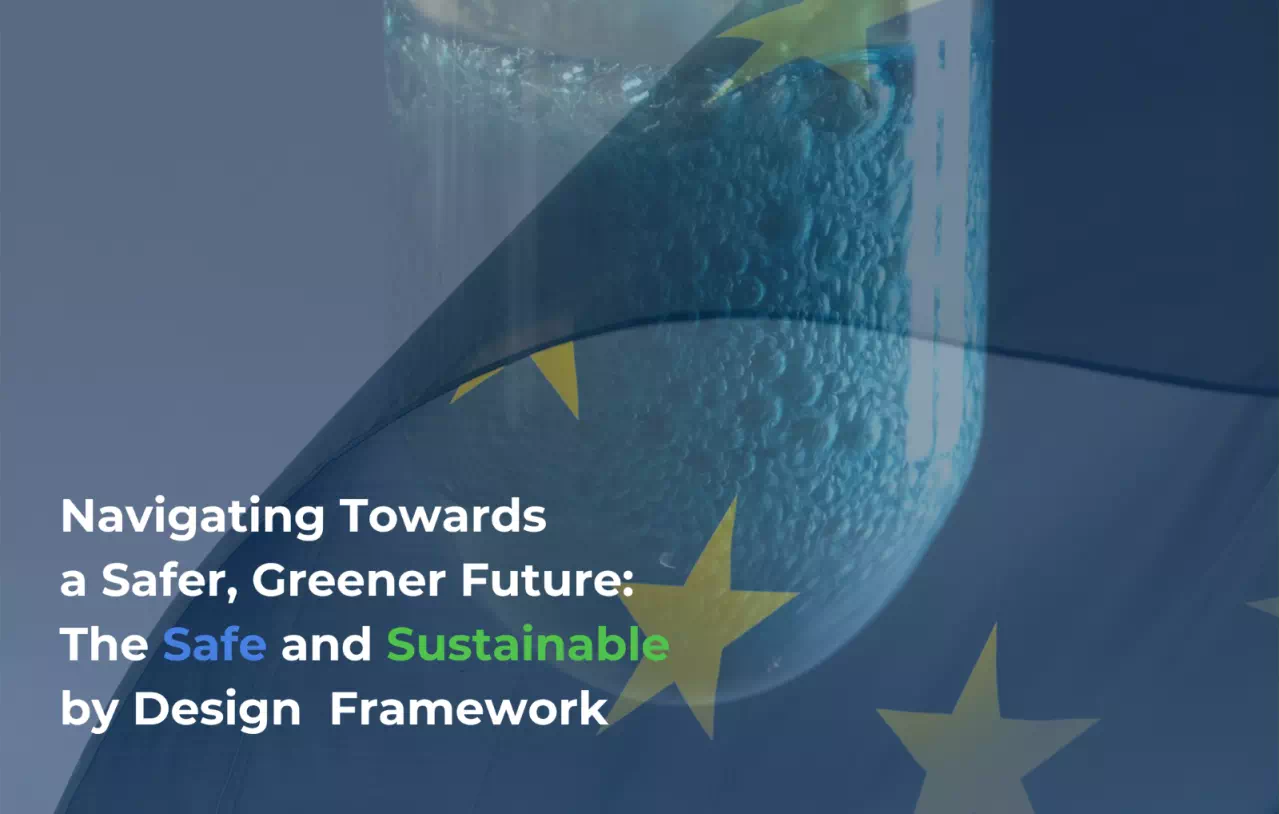
In our quest for a safer and more sustainable future, innovative solutions are essential. The "Safe and Sustainable by Design" (SSbD) framework, launched by the Joint Research Centre (JRC) in 2022, is intended as a beacon to guide research and innovation towards materials and chemicals that prioritise safety and sustainability. Our EU-funded ZeroF project on PFAS-free solutions uses the SSbD framework to revolutionise material design, optimise coating formulations and assess safety and performance. By integrating the SSbD framework, ZeroF aims to steer its innovation process towards greener and safer alternatives, ensuring a future that is both environmentally friendly and PFAS-free.
SSbD Framework - Driving Change in the Chemical Industry
The EU chemical industry sees the SSbD framework as a catalyst for the widespread adoption of new and alternative chemical products and technologies. These innovations not only boost consumer confidence in safety and environmental benefits, but also support the transition to a circular economy and a climate-neutral society.
The SSbD framework, introduced by a Commission Recommendation on 8 December 2022, has a number of key objectives. Firstly, it seeks to steer the innovation process towards a more environmentally friendly and sustainable industrial transition. Secondly, it seeks to mitigate the production and use of harmful substances, closely aligning with existing regulatory obligations. Finally, it aims to reduce health, climate and environmental impacts throughout the life cycle of chemicals, materials and products. By addressing these key areas, the SSbD framework aims to foster a safer, greener and more sustainable future for all.
Core principles of the SSbD Framework
The SSDb framework essentially comprises two phases: the (re)design phase and the evaluation phase. In the (re)design phase, guiding principles are applied to shape the development process, defining the purpose, scope and boundaries of the system for subsequent evaluation. The assessment phase comprises four stages: risk assessment, occupational safety, consumer safety and environmental assessment using a standardised Life Cycle Assessment (LCA) methodology.
- Central to the SSbD framework are four key principles:
- Phase Out Harmful Substances: Beyond targeting Substances of Very High Concern (SVHCs), the framework strives to eliminate the most harmful substances entirely.
- Substitution and Minimization: Prioritizing the use of safer alternatives and minimizing the usage of concerning substances.
- Addressing Emissions Across Life Cycles: Focusing efforts on reducing emissions at every stage of a product's life cycle.
- Contributing to Green Deal Objectives: Ensuring that substituted materials align with broader sustainability goals.
Implementation and Testing: SSbD in Action
- The framework, designed for Member States, businesses, universities and research organisations, has been rigorously tested over a two-year period, and revisions are carried out based on feedback from stakeholders. It follows a hierarchical approach, targeting three levels of design:
- Molecular Design: Investigating atomic and molecular structures to engineer safer alternatives.
- Process Design: Optimizing manufacturing processes to minimize environmental impact and maximize resource efficiency.
- Product Design: Considering sustainability and safety from conception to disposal.
Monitoring Progress: Assessing Sustainability with SSbD
To assess sustainability, the SSbD framework uses a holistic approach encompassing environmental, economic and social assessments.
Environmental assessment: Using standardised Life Cycle Assessment (LCA) methodology, the SSbD framework provides an in-depth assessment of potential environmental impacts at all stages of a product's life cycle. This provides an overall understanding of its environmental footprint and helps guide decision-making towards more environmentally friendly alternatives.
Economic evaluation: Using life cycle costing (LCC) methodology, the SSbD framework evaluates the costs incurred from production to disposal. By taking into account both initial and long-term expenditure, this approach enables informed decisions to be made that reconcile economic viability with sustainability objectives.
Social acceptance: Recognising the importance of consumer behaviour and acceptance, the DSSb framework carries out information efforts and awareness campaigns. Understanding society's attitude to new technologies is essential if they are to be successfully adopted and integrated into sustainable practices.
In essence, the SSbD framework represents a harmonious blend of innovation and sustainability. By integrating these principles into the design process, we are paving the way for a future where safety, sustainability and innovation converge seamlessly, ensuring a world that is not only safer and greener, but also more resilient for generations to come.